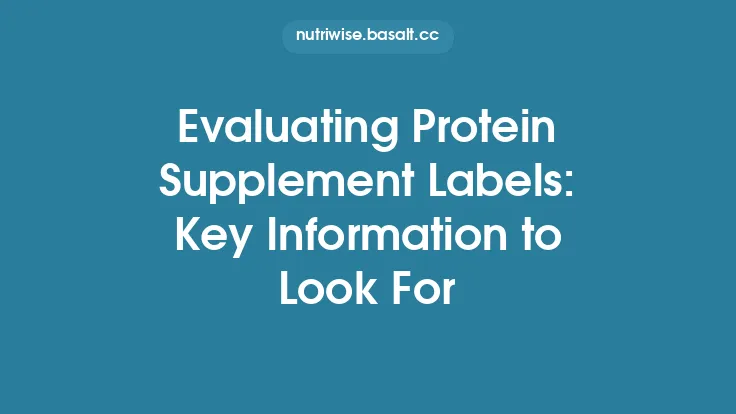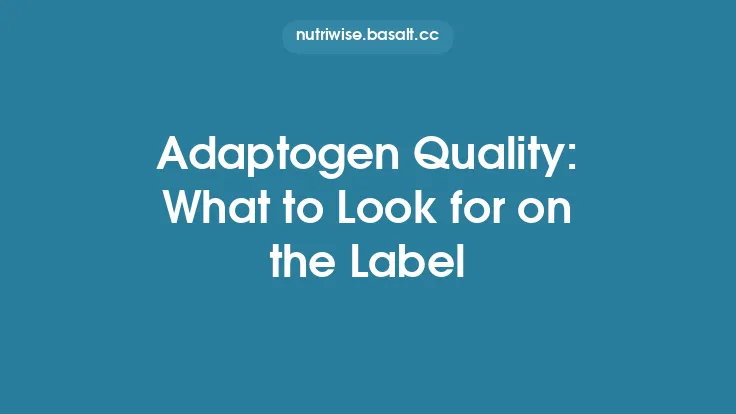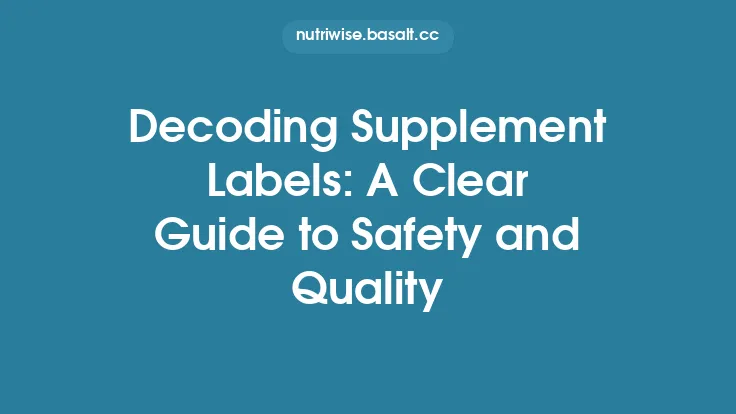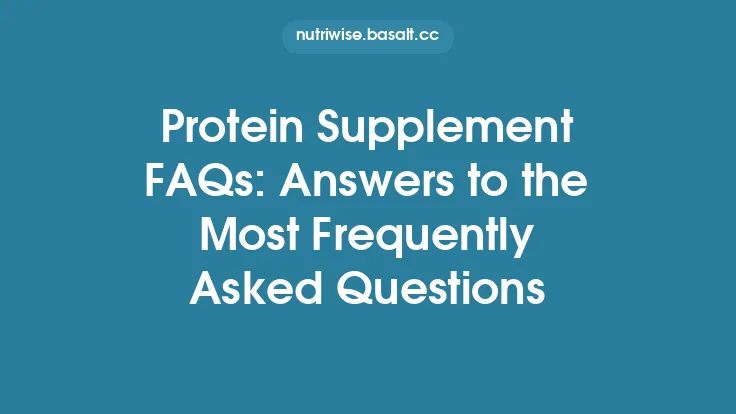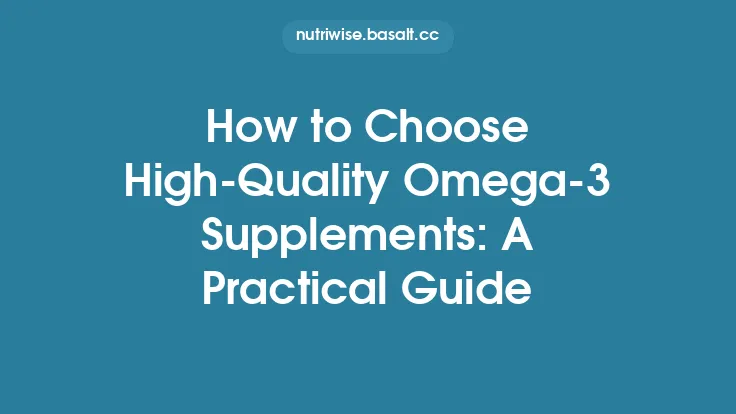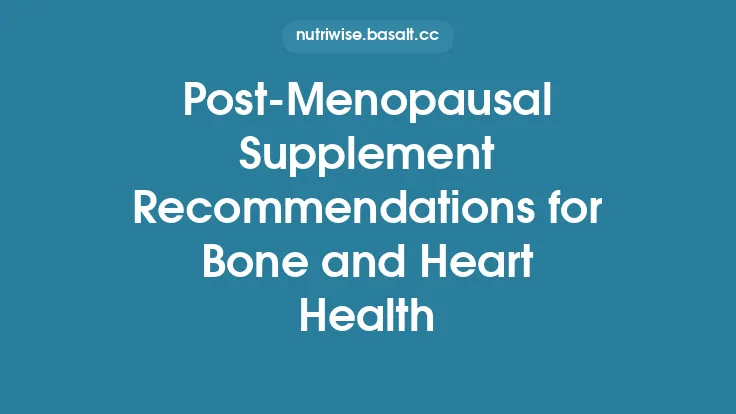Supplement safety begins the moment you pick a bottle off the shelf. While the ingredients themselves often receive the most attention, the packaging that houses them is a critical source of information—and, when done poorly, a warning sign that something may be amiss. By learning to read beyond the glossy graphics and marketing slogans, you can spot red flags that indicate potential quality, safety, or transparency issues before you even open the container.
Missing or Incomplete Supplement Facts Panel
A complete Supplement Facts panel is the backbone of any reputable product. If the panel is absent, partially hidden, or lacks essential details such as serving size, amount per serving, and % Daily Value, it should raise immediate concern. Incomplete panels often hide proprietary blends that mask the true quantities of each ingredient, making it impossible to assess whether the dosage falls within safe limits.
Vague “Proprietary Blend” Claims
The term “proprietary blend” is not inherently illegal, but it becomes a red flag when the label provides no breakdown of the individual components. Without knowing the exact amounts of each ingredient, you cannot determine if the blend contains excessive levels of stimulants, herbs, or vitamins that could interact with medications or exceed tolerable upper intake levels.
Absence of Allergen Information
Allergy warnings are not optional. If a product fails to list common allergens (e.g., soy, dairy, gluten, nuts, shellfish) or does not include a statement such as “may contain traces of…,” you risk exposure to hidden allergens. This omission is especially concerning for individuals with severe food allergies or sensitivities.
No Expiration or “Best‑By” Date
Supplements, like foods, degrade over time. A missing expiration date, “best‑by” date, or manufacturing date eliminates a key safety check. Even if the product appears sealed, the potency of vitamins, enzymes, and botanical extracts can diminish, and some ingredients may become unstable or form harmful by‑products after prolonged storage.
Lack of Lot or Batch Number
Lot numbers enable traceability in the event of a recall or adverse reaction. When a label omits this identifier, it hampers the ability of manufacturers, regulators, and consumers to track the product’s production history. This omission often signals inadequate record‑keeping practices.
Inadequate Contact Information
A trustworthy supplement will list a physical address, phone number, and preferably a website for the manufacturer or distributor. If the label only provides a vague “customer service” email or a generic corporate name without a location, you have no reliable way to ask questions, report side effects, or verify the company’s legitimacy.
Overly Broad or Unsubstantiated Health Claims
Phrases such as “cures,” “miracle,” “guaranteed results,” or “clinically proven” without any citation are classic marketing red flags. While some language is permissible under general advertising rules, claims that imply disease treatment or prevention cross into territory that should be supported by rigorous scientific evidence. Their presence often indicates that the product’s primary focus is sales rather than safety.
Absence of Safety Warnings and Contra‑Indications
Supplements can interact with prescription drugs, exacerbate medical conditions, or be unsafe for certain populations (e.g., pregnant or nursing women, children, individuals with hypertension). If the label lacks warnings about known risks—such as “Do not exceed recommended dose,” “Consult a healthcare professional before use if you are pregnant,” or “May increase blood pressure”—the manufacturer is failing to provide essential safety information.
Inconsistent or Poor‑Quality Printing
Smudged text, mismatched fonts, or low‑resolution graphics can be more than an aesthetic issue. Inconsistent printing may indicate rushed production, inadequate quality control, or even counterfeit packaging. Counterfeit products often mimic legitimate brands but cut corners on label fidelity.
Missing Tamper‑Evident Seals
A tamper‑evident seal (shrink band, foil seal, breakable cap) is a simple yet vital safety feature. Its absence makes it difficult to verify that the product has not been opened, contaminated, or altered after leaving the manufacturing facility.
Inappropriate Packaging Materials
Certain ingredients are sensitive to light, moisture, or oxygen. If a light‑sensitive vitamin (e.g., vitamin A, riboflavin) is packaged in a clear bottle without an opaque inner liner, the product may degrade faster than advertised. Similarly, hygroscopic powders (e.g., magnesium, certain herbal extracts) should be stored in moisture‑resistant containers; otherwise, clumping and microbial growth become concerns.
Lack of Child‑Resistant Packaging When Needed
Products containing stimulants, high doses of vitamins, or botanicals with potent pharmacological activity should employ child‑resistant caps. The absence of such safety mechanisms, especially in products marketed to families, raises the risk of accidental ingestion by children.
Overly Small or Obscure Warning Text
Regulatory guidelines often require that safety warnings be presented in a legible font size and contrast. When warnings are tucked into fine print, placed on the back of the label, or printed in a color that blends with the background, they become effectively invisible to the consumer—a deliberate tactic to downplay potential risks.
“All‑Natural” or “No Additives” Claims Without Evidence
The terms “all‑natural,” “no fillers,” or “free from artificial ingredients” are attractive but can be misleading. If a product lists a “natural” ingredient that is, in fact, a chemically synthesized analogue, or if it omits a full ingredient list to hide additives, the claim is deceptive. Look for a complete ingredient disclosure to verify such statements.
Absence of Storage Instructions
Many supplements require specific storage conditions (e.g., “store in a cool, dry place,” “protect from light”). Without clear guidance, consumers may inadvertently expose the product to heat, humidity, or sunlight, compromising potency and safety.
No Disclaimer About Medical Advice
A responsible label will include a disclaimer such as “These statements have not been evaluated by the FDA. This product is not intended to diagnose, treat, cure, or prevent any disease.” While this is a standard legal requirement, its omission can suggest that the manufacturer is attempting to position the supplement as a medical therapy, which is misleading.
Unusual or Misleading Branding
If a supplement’s packaging mimics prescription medication (e.g., using a white, pill‑bottle shape, or a professional‑sounding name), it may be designed to convey unwarranted credibility. Such branding can confuse consumers about the product’s regulatory status and safety profile.
Inconsistent Information Across Product Line
When a brand’s different products display conflicting information—such as varying dosage recommendations for the same ingredient, or contradictory allergen statements—it signals a lack of coordinated quality control. Consistency is a hallmark of a well‑managed supplement line.
Absence of Third‑Party Testing Statements (When Expected)
While a deep dive into third‑party certification is beyond the scope of this article, the simple presence—or absence—of a statement indicating that the product has been tested for purity, potency, or contaminants can be a quick safety cue. If a product makes potency claims but provides no indication of any testing, treat the claim with skepticism.
By systematically scanning supplement packaging for these red flags, you empower yourself to make informed choices and avoid products that may compromise your health. Remember that the most reliable supplements are those that are transparent, well‑labeled, and designed with consumer safety as a priority. When in doubt, err on the side of caution and seek products that meet the highest standards of clarity and accountability.
